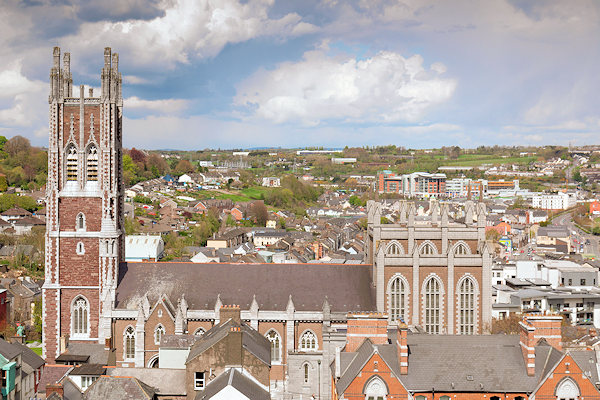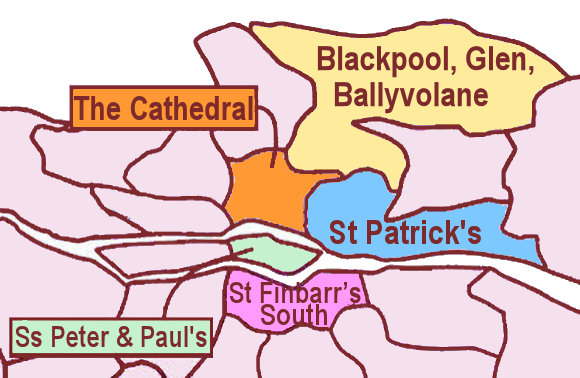The Catholic Cathedral of St. Mary & St. Anne is "the Mother Church of the Dioceses of Cork and Ross" and was dedicated in 1808
(building had begun in 1799). It is the fourth church of this parish since, at least, 1306. The construction of the Cathedral was planned and overseen by Bishop Francis Moylan (Bishop of Cork 1787-1815).
To build a Cathedral in the 17th Century was a major undertaking, as the parishioners were poor, and was considered a 'symbolic challenge to the dying penal statutes'. The building is a combination of sandstone with limestone dressings and is of early Neo- Gothic Revivalist style. The original architect is unknown.
The Cathedral was extensively damaged by fire in 1820- only the shell of the building remained. Bishop John Murphy (Bishop of Cork 1815-1847) entrusted the refurbishment to architect George Pain (who also designed Christ Church, St. Patrick's Church and Holy Trinity).
 The Catholic Cathedral of St. Mary & St. Anne
The Catholic Cathedral of St. Mary & St. AnnePain extended the Cathedral by enlarging the sanctuary and creating a Chancel Arch, and it was reopened in 1828.
Bishop John Murphy commissioned John Hogan, then an apprentice sculptor, to execute the reredos behind the High Altar. It included 27 statues, carved in pine, of apostles and saints. These are now positioned in decorative plasterwork over the nave.
The Western Tower (over the main door) was undertaken by Canon Daniel Foley in the 1860's and was designed by Sir John Benson- he was also responsible for the Great Western Door.
The Tower is 152 feet high, 10 feet higher than the steeple of nearby St. Anne's Church, Shandon. The 1960's brought a new extension of 70 feet to the cathedral, with a new Sanctuary Tower of 80 feet to compliment the Western Tower and a rearranged sanctuary inside.
The Neo- Gothic originals and the later extensions lacked harmony until the 1996 reordering and renovation. The vision of architect Richard Hurley drew the Sanctuary into the body of the Cathedral and brings congregation around three sides of the altar.
The entire fabric of the building was repaired and restored under the guidance of the late Bishop Michael Murphy whose final public function was its re-dedication on September 29th, 1996.

